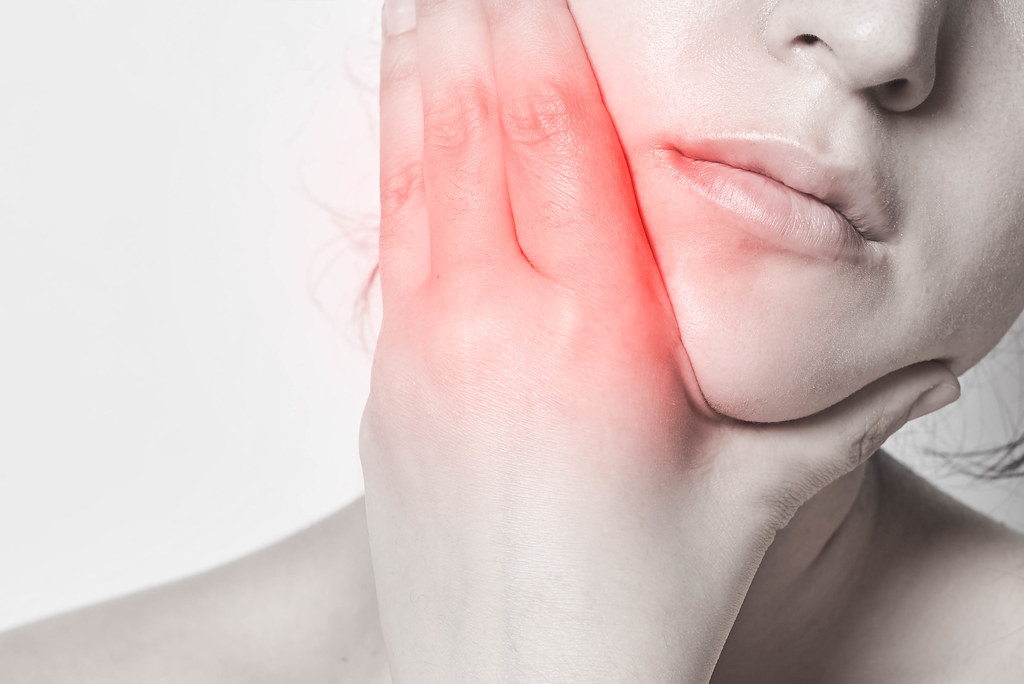Do you suffer from pelvic pain? Do you also have aches and pains in your jaw as well as in your pelvis? These pains might seem unrelated but there is a strong link to pelvic and jaw pain. The reason for this is that you have 3 diaphragms that move when you are breathing. One is located in your neck and throat, one is your respiratory diaphragm, and the last is in your pelvic floor muscles.
TMD, short for Temporomandibular Joint Dysfunction, is a problem that causes pain in the jaw joint and its surrounding tissues and muscles.
Symptoms of TMD include:
- Jaw clicking
- Jaw popping
- Lockjaw
- Difficulty and/or pain opening the mouth
- Persistent earaches
- Tenderness above and around the jaw
- Headache
- Ringing in ears
If you notice any of these symptoms in your jaw, you could be struggling with TMD. Though the causes can vary, TMD is accompanied by tight muscles not only in the jaw but in the neck and throat.
So how does TMD connect to the pelvis and pelvic pain? This is where unique lifestyle habits and postures, even those that you may be unaware of, come into play. Our posture greatly affects the neck, jaw, and pelvis because these body parts are linked through the connections of the spine. For example, if you tend to slouch or hunch over, your body may compensate by extending your neck, jaw and pelvis without you even realizing it. If you work sitting at a desk or using a computer for long periods at a time, the muscles that flex the hip and the muscles in your neck can become shortened. Certain types of posture and walking patterns can even cause one side of your pelvis to tilt one way more than the other. These imbalances can create pain and tightness in the pelvis and can also lead to other movement dysfunctions throughout the body and into the jaw. Lifestyle habits influence our posture as well. Stress can cause clenching of the jaw or pelvic muscles and thus increase pressure and pain in one or both regions. Anxiety causes this reaction, too, and over time, the jaw and pelvis may get stuck in a tense holding pattern together.
Now that you know how TMD and pelvic pain “click,” it is easy to see how treating jaw pain can bring relief to the pelvis and vice versa. Here are some exercises that we often recommend to realign your jaw and pelvic joints into their proper positions to help relieve your pain:
Perfect Your Posture:
- 1. Become more aware of your posture and learn how to correct it.
- 2. Make sure that your pelvis, spine, and head are lined up with one another to keep your body in better balance. A quick way to check your posture is to sit or stand up as usual and observe the positioning of your chin. Is it extending forward or upward in front of your shoulders? If so, subtly stand or sit more upright while aligning the chin more in line with your shoulders. You can do this by subtly lengthening the back of your neck toward the wall behind you into a slight chin tuck.
- 3. After a little bit of practice, this new positioning should become easier and more natural because you are increasing the flexibility of tight tissues. Improved overall posture puts much less stress on muscles which should help alleviate pain.
Breathe, Relax and Rest
- 1. This exercise is a great way to ease the tension from clenching the jaw and pelvic muscles to find some pain relief! Rest your tongue on the roof of your mouth.
- 2. Breathe diaphragmatically (deeply and fully through your lower abdomen and back, as opposed to shallowly through your chest). As you breathe diaphragmatically through your nose, relax your jaw muscles, and focus on the subtle movement of your pelvic floor muscles.
- 3. Allow your jaw and pelvic floor to relax or “drop,” while inhaling. Focus on the feeling of these muscles lengthening and loosening. While exhaling, continue to focus on this lengthened and relaxed feeling in both your pelvic floor and jaw muscles and they will begin to loosen up together.
Whether you have jaw or pelvic pain, consider how one of these areas may be negatively impacting the other and give these exercises a try to relieve both. If you have a history of jaw pain and/or pelvic floor dysfunction, physical therapy can offer additional strategies for those seeking relief and answers. You may benefit from a more specific individual evaluation and the orthopedic and pelvic floor physical therapy experts at Rebalance Physical Therapy can help you manage and relieve pain. Contact us today to schedule a consultation!
Written by Stephanie Muntzer, MPT, PYT, RYT200, CPI, SFMA, FMSc
















